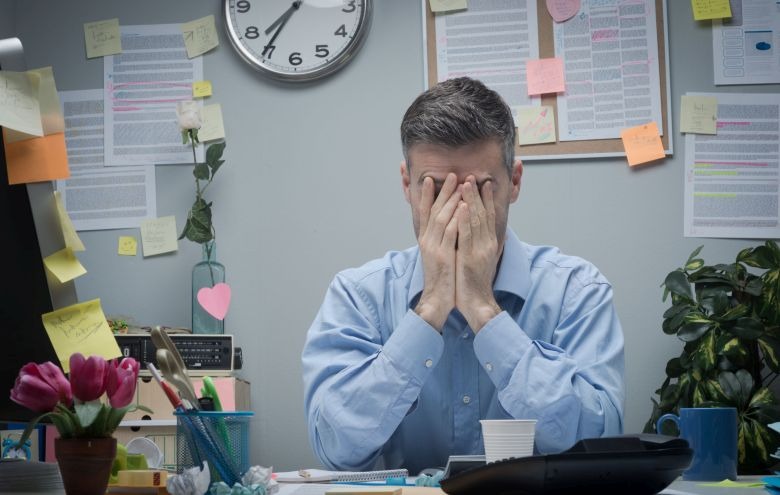Remote work. It used to be a perk. Who would’ve thought that a work from home arrangement could lead to remote work fatigue, burnout and stress?
More than half of employees working from home have reported feeling burned out. Financial anxiety plus the added challenge of dealing with the pandemic (juggling home and work life, plus kids) have begun to take its toll. People aren’t inclined to take time off for fear of layoff.
What’s a burnout and how is it influenced by remote work fatigue?
Burnout happens when we’re tasked to do things we don’t normally do or when we face challenges that test our capacities. Burnout isn’t cabin fever – the distressing feeling of restlessness and claustrophobia when a person is confined for long periods. It’s more than having a bad day. Burnout is a chronic feeling of stress and exhaustion.
Remote workers are embarrassed to admit it. After all, frontliners and essential workers are barely pulling through. But even the toughest among us can get burned out.
“Remote work fatigue is real. Imagine trying to check emails while supervising a first grader through her online class, and dealing with irate clients all at the same time”, explains Dianne Crampton, Founder and President of TIGERS Success Series, Inc. “Or how about struggling to meet a quota when everyone else is at less than 100% office capacity”, she adds. It’s a balancing act – the work-life balance, the worry that employees might catch the coronavirus, and everything else in between that we’ve been doing for the past few months since the pandemic started.
Crampton cautions leaders to plan their reemergence strategies carefully and to include planning to deal with remote work fatigue. Unpredictable business reopening and closures based on community infection rates takes an additional toll. An employee returns to the office at the beginning of the week and returns to working from home a few days later. It takes collaborative and project skilled leaders to pull employees through the emotional upheaval employees are experiencing today.
But to be candid… we’ve been tilting towards burning out, to begin with.
Burnouts happen when physical exhaustion meets emotional fatigue. Therefore, you get disconnected and begin to question your why’s for doing what you do. Soon this leads to depression and anxiety, two conditions that impact resilience.
The canary in the coal mine
Canaries used to be placed in cages and brought to coal mines to detect the presence of carbon monoxide and other toxic gases. It’s a practice that began in the early 1900s and was used as an early-warning signal for harmful fumes. Today, burned-out workers can be likened to canaries in coal mines. They are accurate indicators of the working environment’s toxicity.
But the real culprit is the culture at work and collaborative leadership competency – not the workers’ ability to adjust.
Those who work remotely because of the pandemic are now experiencing job burnout and are the proverbial canaries in the coal mine. Feelings of anxiety and unnecessary stress caused by technology, homeschooling and inadequate home work space are reflections of bigger problems in the office. Burnout is a red flag. Unfortunately, it’s a red flag on the employer or manager’s side of the equation, too.
How to recognize culture and leadership practices that contribute to remote work fatigue
Here are the usual culprits that lead to remote work fatigue and workplace burnout:
- Conflicts in employee priorities and values
- Demand overload caused by poor work planning and organization
- Lack of control to perform work in a child-free zone.
- Inadequate recognition or reward
- Toxic workplace behaviors and leadership performance
- Biased practices which result in certain social groups being advantaged or favoured and others being disadvantaged or devalued
Imbalances lead to exhaustion, cynicism, and point to leadership competence.
A solid example is how US essential workers and health care workers make their own masks and protective gear. It’s inspiring at first, but dig deeper and we realize that the demand from them is too much. Closer to home are parents who perform their work and care for children at the same time. The new realities of homeschooling, caring for an aging parent, or even finding ways to supplement the household income are recipes for a breakdown.
Burnout isn’t an individual weakness. It’s a social phenomenon that nobody was prepared for. As we continue to find a cure for Covid-19 and as we pummel through remote work, a strong and healthy work environment is needed now more than ever.
Connect with TIGERS and see how our expertise can help you and your team members manage burnout and stress. Click HERE.
Care to dig deeper into remote work fatigue?
Here are some additional resources that add to this conversation.
- How To Prevent Workplace Burnout
- How To Deal With Workplace Burnout
- TIGERS Among Us – Winning Business Team Cultures and Why They Thrive
- Becoming TIGERS – Leading Your Team To Success
- Why Happiness Matters in the Workforce and Beyond
- Melting Your Stress within 30 Days
- Schedule a business call.
Copyright TIGERS Success Series, Inc. by Claudia Craven
About TIGERS® Success Series
TIGERS provides a comprehensive, multi-pronged and robust system for improving your workforce behavior, work culture, profitability and project management and team leadership success.


